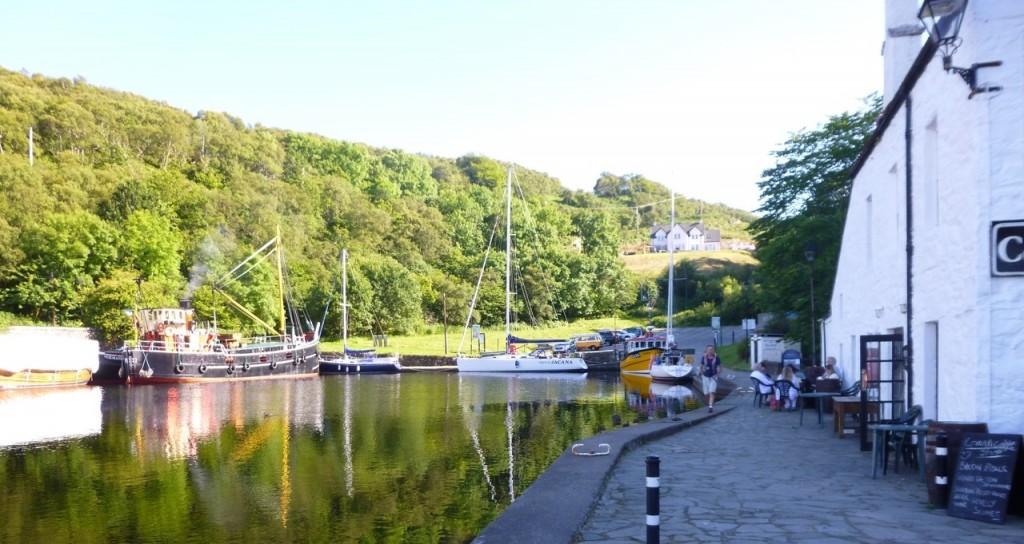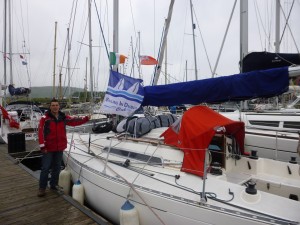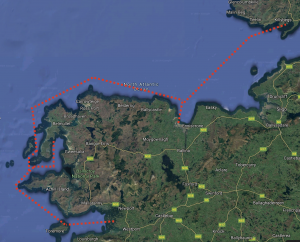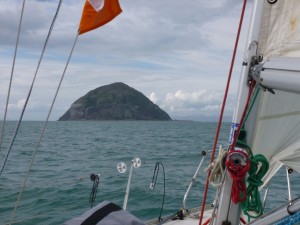July 11th: Relieved to wake to a calm morning after a noncommittal forecast the night before.
On the Crinan to Mallaig chart, today’s passage occupied a postage-stamp sized area crammed with stars (rocks), wavy lines (overfalls) and spirals (um, whirlpools). Larger and larger scale charts were sought until the passage covered 5 A2 charts – still covered with rocks, overfalls and whirlpools.
It began with an annoying 40-minute wait in the Crinan basin while a steam ship happily blocked our exit. As the lock-keeper put it: “When the Vic 32 moves, nothing else does.”

Crinan basin with VIC 32 in the background
Our first heading was through Dorus Mor (“big door”), a tidal gate with streams of up to 8 knots and a submerged rock for good measure. Just past slack water, we had about a knot under us. We passed up the opportunity to pass through the infamous Gulf of Corryvreckan to the west (check out this video of the Lifeboat taking on the Corryvreckan whirlpool and ask yourself if you’d take your boat through that.) A combination of tidal races and unusual topography of the seabed makes the waters ferocious and it’s generally advised to only make the passage at slack water in calm weather.
The sane route north, and the one we were on, is the wider and more tranquil Sound of Luing, where several yachts appeared behind with large genoas, possibly racing. We hoisted our own sails for the last time on this trip, but the wind didn’t play ball for long.
Further north up the sound there are shallows to east and west, giving you a margin of about 300m on either side. Between these the stream reaches 7.5 knots. With the tidal stream on our starboard quarter, staying on track required a very significant heading change to starboard. I could see the GPS speed race up to 10.5 knots on my handheld, compared to the 4.5 knots the log was registering through the water, but I refrained from sharing with the crew until the rocks were behind us.
We followed the coast around until we were approaching the well-marked Sound of Kerrera. It was all pilotage from here. Sails were stowed for the last time, and we enjoyed the last sunny afternoon of our trip, arriving at Oban marina at 1530 just as the wind picked up.
Oban marina isn’t actually in Oban. It’s across the water on Kerrera island. Like all the Scots we’d encountered, the staff were friendly and helpful and we spent the next couple of hours topping up our fuel and making the boat immaculate for the next day’s crew.

Final destination
Flying Swiss V was berthed behind us, belonging to the Cruising Club of Switzerland. You can see where they’ve got to by now if you like.
Our first land meal in 7 days was had in Oban – I think everyone had the Haggis starter. The crew bought my dinner too which was much appreciated.
Dun Laoghaire to Oban completed.




